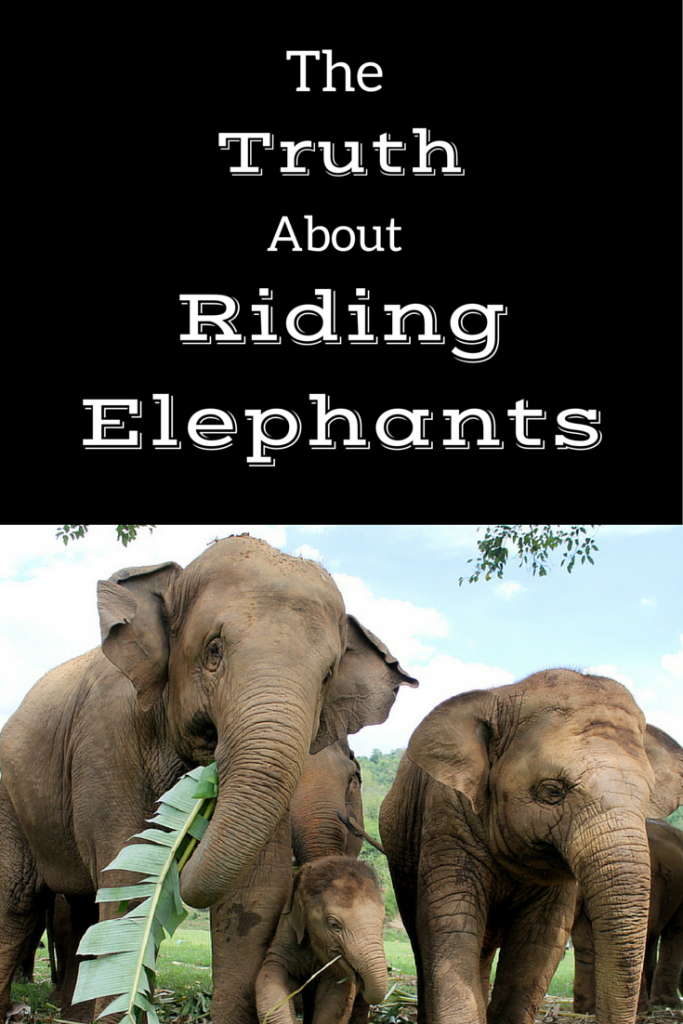
I watch, happy tears swelling in my eyes, as the first of two rescued ex-trekking elephants walks off of the truck, backing out slowly and cautiously placing her hind legs, one-at-a-time, on the ground.
It’s pitch black, save for a few flashlights and one camera light. Around us, cicadas, frogs and crickets all compete to pierce the oh-so-still night.
She walks softly, crunching dried grass, as we follow behind her. Slowly, slowly she walks. To freedom. At the Cambodia Wildlife Sanctuary.
From this moment forward, she will never have to strap a 200-pound bench to her back. From this moment forward, she will never have ropes cutting into her. A bull hook threatening to slash her ear, forehead or neck. She will never have the weight of a person on her. But, most importantly, she will never again be exploited for a human’s need to cross “riding an elephant” off of some bucket list or posing atop her back for a selfie.
Even though I no longer live in Thailand, I receive emails from readers regularly who ask: Should I ride an elephant? What’s the truth about riding elephants in Thailand and the rest of the world?
While many people know me and my work, and that I lived and breathed responsible elephant tourism in Thailand for three years, others don’t, and it normally requires I break down not only why I believe people shouldn’t ride an elephant, but also that I know — despite the realities and the press educating people about the horrific lives elephants in captivity lead — people will still choose to ride them.
Today, I am addressing the questions/comments I receive the most:
Are you sure all elephants in captivity have been tortured in order to be captive?
The sad truth about elephants in captivity is that if they are involved with humans in any way, their spirit has been broken.
Elephants are systematically poached from the wild in order for tourist attractions to keep stock of their moneymakers. Often times, older members of the herd are killed and babies are kept, because, let’s face it, who doesn’t want to see a baby elephant on their travels? Operators know this, therefore it is most common that young elephants are captured illegally and taken to remote areas of countries to undergo a “breaking of the spirit”. Even if an elephants is born into captivity, they still undergo this horrific process. In Thai, this is known as the phajaan.
WARNING: The videos in this post contain graphic and disturbing images.
A centuries old ritual, baby elephants are placed in small wood enclosures (often referred to as “the crush,” as it is designed to crush their spirit), wrists and ankles are bound tightly, and then knives and other sharp objects are placed in their most sensitive areas (ears, eyes, feet, bum, trunk and other parts of their bodies). In this manner, they are trained and broken.
This process goes on for days. During this time, they are routinely deprived of sleep, food and water, and are beaten and bloodied until they learn how to accept human commands. Many young elephants don’t make it through this process. At the end of the crush, the ties to their family herd are gone and they are slaves to people.
This dirty little secret is often not talked about because it isn’t widely known or acknowledged in mainstream media. When I used to pitch major magazines about this, the response was always something along the lines of, “that’s terrible, but we don’t want to upset our readers with this information.”
In reality, any elephant you have seen in captivity and working has gone through this torturous process. Operators, of course, will deny the elephants they have either rented or purchased have undergone this because it is bad for business.
However, this is what elephants go through before they even make it to trekking camps, circuses, zoos and more. It is a culturally accepted practice.
The elephant is a big, strong, and potentially dangerous animal. To get them to become submissive to man does not come easily. The only way man knows how to get the results they want — and quickly — is to break their spirit. This process happens in every country where elephants are used to work for humans. What’s worse? It’s been happening for more than 6,000 years.
How do I know?
I worked in responsible elephant tourism for a few years and during that time, I went on trips around SE Asia to learn more about the human/elephant relationship.
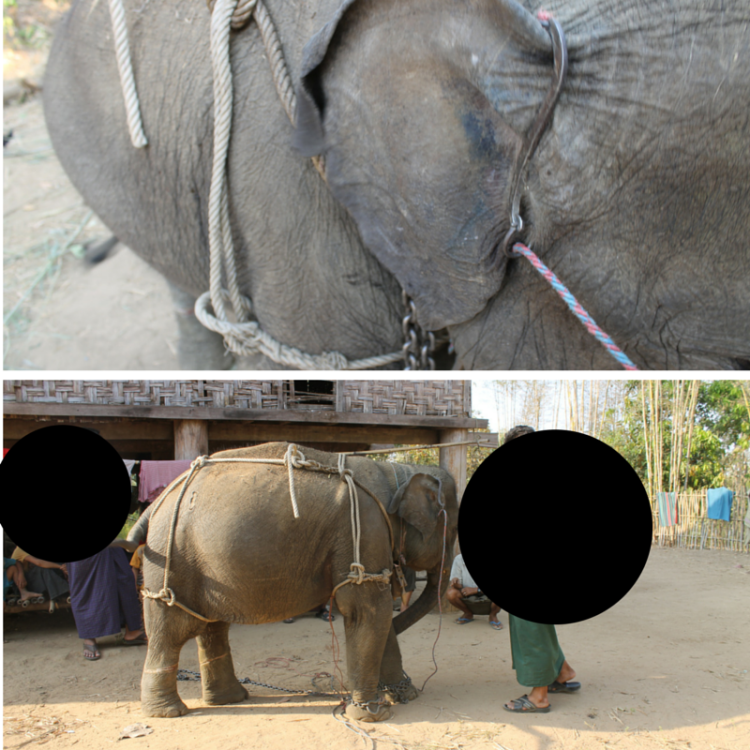
While in one country, I was witness to the final stages of the crush. In a tiny little village (we’re talking a few huts), an elephant around four-years-old was presented to us. The locals were proud to show us because, since it is a long-standing ritual and a part of their culture, they saw nothing wrong with it.
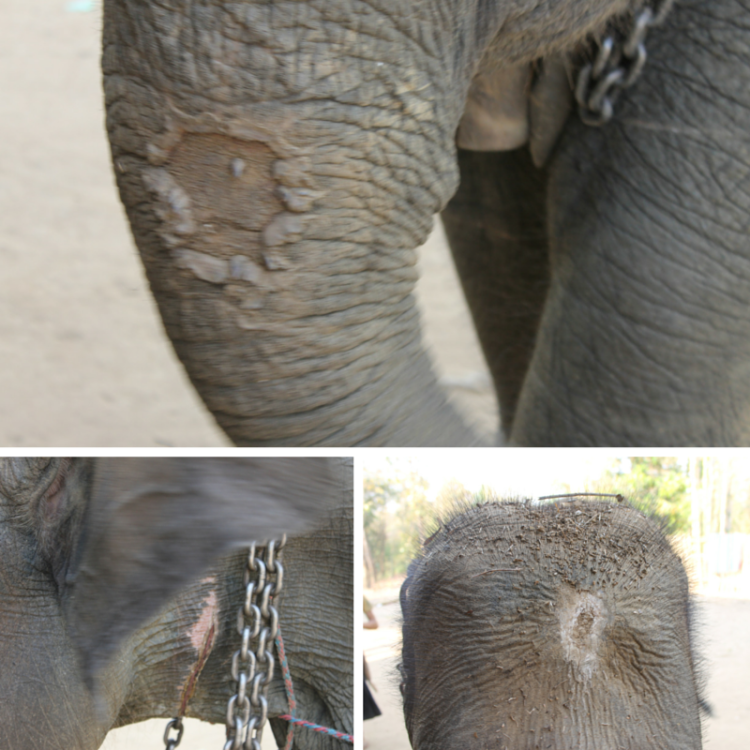
They took this young girl, covered in bloody cuts and marks from ropes, and tied her up to show us how they trained her.
But, that is just the beginning. Through my research, I was witness to incredible horrific sites. Logging elephants tied to trees with only an inch to move. Numbers branded into their backs. Scars showing their past breaking.
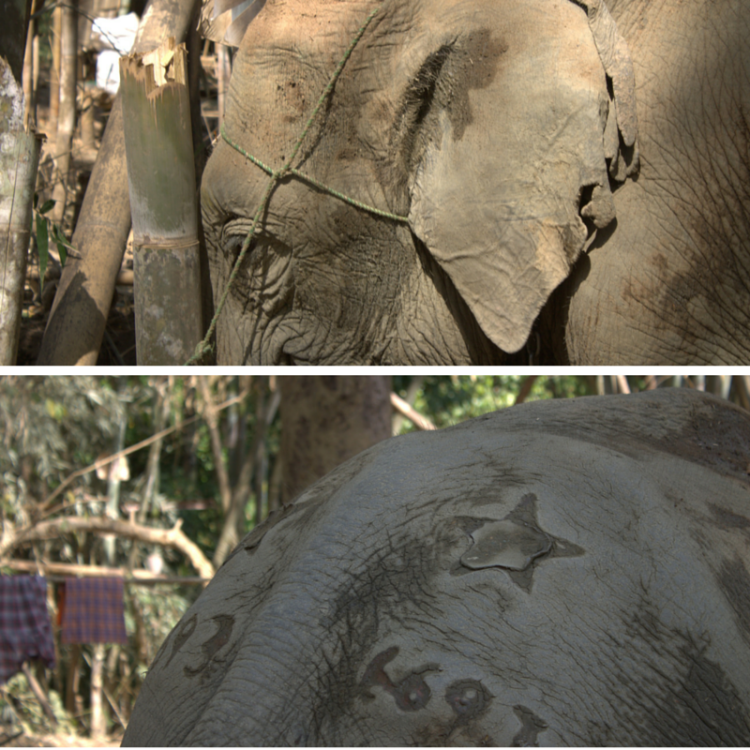
Today, it is not difficult to find out the truth; there is a vast amount of information available on the internet, if you know how to look for it. Many research findings have been published regarding this fact. In theory, information like this should easily answer the question about riding elephants in Thailand, SE Asia and the rest of the world. One country offering rides is no different than any other: the elephants have all put through the same process because it is what has always been done and will continue to be done until people stop giving the industry money.
You can ride horses. Why shouldn’t you ride elephants?
Horses and elephants bodies are different. And, the process with which they are broken is different, too. I find that most people who argue this with me are simply trying to justify riding an elephant. The reality is, riding an elephant and riding a horse are different, and it is difficult to compare the two. Horses are broken so they can be ridden, which means their spirits are broken. To put it this way: a wild horse does not wish to be ridden by a human any more than a wild elephant wishes to be ridden. To get them to allow this requires breaking. Thankfully, there has been a movement towards “gentling” horses, which is more humane.
When discussing the argument of riding elephants versus horses, remember this: elephants are an endangered species. We are not helping to conserve them by exploiting them for working in tourism or logging. In fact, many elephants die prematurely due to excessive abuse and poor husbandry practices.
I think those mahout-for-a-day programs look really cool. What’s wrong with them?
Aside from riding them, the mahout-for-a-day programs not only encourage too much human interaction (which can be dangerous for the people), but also causes mental issues for the elephants. Remember, these animals have been horribly abused prior to arriving at these programs. And, they don’t forget the abuse. Add the fact that each day, they have someone new riding them and telling them what to do can cause emotional issues for the elephants and put people at risk for attacks.
It should be pointed out that with these programs, the rider isn’t actually controlling the elephant. Many camps offering these activities place a large, sharp hook tied around an elephant’s ear with a rope attached to it. The real mahout walks ahead, pulling the rope, causing the sharp point to stab the elephant in the sensitive area behind the ear. This is actually what gets the elephant to move. Most of the mahouts also carry nails, which they can hide in their hands and tourists never see. When the elephant does not listen, they quickly go behind the elephant and jab the animal.
Like with horseback riding, it is common that elephants in these programs are the more docile and broken ones who won’t question authority. However, even these elephants can snap and it is very dangerous to be alone on top of an elephant when they decide he/she no longer wants to have a rider on its back and shakes the person off.
How can I tell if an operation really is good to the elephants, or if they are just tapping in on the sanctuary greenwashing verbiage to get more business?
There are many elephant tour operators who have realized that sanctuaries can be cash cows. Because many travelers operate solely off of Trip Advisor reviews or packaged deals, they think they are doing the right thing by going to a sanctuary, but really, the sanctuary is simply a mask for elephant trading and exploitation and is using greenwashing to entice people to visit.
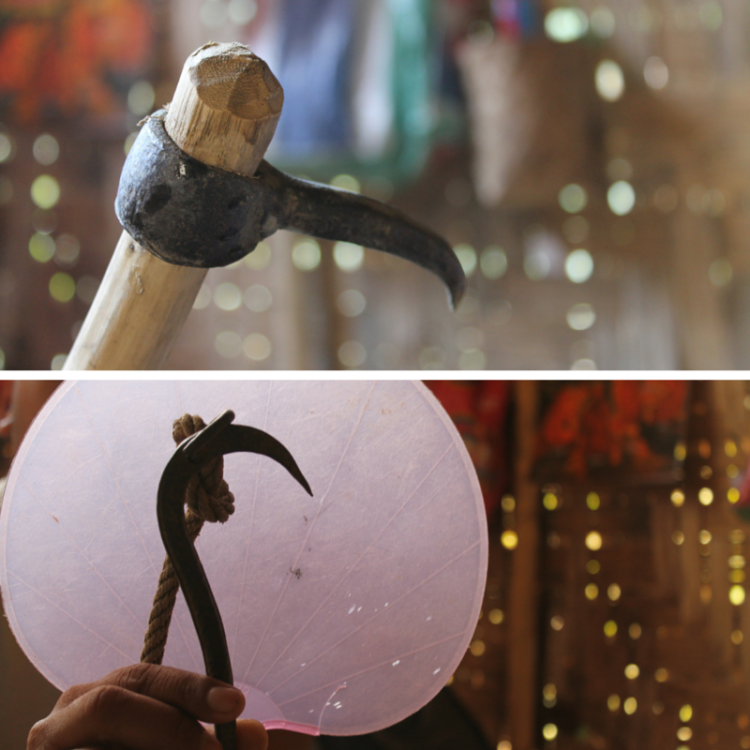
Be wary of any operator who says they rescue elephants and place them in a sanctuary if they offer any of the following:
– Elephant rides
– Elephant shows (circus performances, playing music, playing sports, etc.)
– Elephant paintings
– Control of the animal with hooks or other pain-inflicting instruments
Also, be on the lookout for abuse. If it is a sanctuary, it means the elephants are supposed to be living in peace. Any operator that uses bull hooks or other instruments to control the elephant means it isn’t a true sanctuary. The elephants should remain off-chain, and not be made to work.
If you aren’t sure about whether a place is really a sanctuary, ask questions:
– Where do the elephants come from?
– What is their life like in the sanctuary?
– Are they able to interact with other elephants?
Keep in mind that most tour operators will tell you what they think you want to hear, so often times it is up to you to do some digging and find out information outside of what is provided to you. Remember, many hotels and hostels will sell packages to you and then get a kick back from the tour operator. It is in their best interest to tell you what they think you want to hear.
Many times when I lived in Chiang Mai, people would talk about their experience at Elephant Nature Park and then about how amazing it was to ride an elephant there. Since Elephant Nature Park doesn’t offer rides, it was clear that these unknowing tourists were actually sold packages to other camps and had it passed off as the Park. Be aware.
What about riding elephants at zoos, circuses or fairs? That’s ok, isn’t it?
Nope. I used to be of the frame of mind that if an animal attraction was offering interaction — especially in the US — then it was regulated and free from abuse. But, that’s not the case. Over the years, reports have surfaced about abuse at circuses and more. Just because rides are being offered does not mean there is anything OK or ethical about them. As I mentioned before, there is no ethical way to keep elephants in captivity. So, again, it is about the demand and showing those in the industry that torturing the animals for our enjoyment is acceptable. It also goes back to the ethics and abuse involved in animals giving rides.
Are Shows, Paintings and Sports OK?

Perhaps you’ve seen the video of elephants playing music and thought it was adorable. Elephants are so talented, right? You’d be talented, too, if faced with torture. Like riding, all of these activities invite abuse in order to train them.
Elephant painting is perhaps one of the most abusive training practices I have ever seen. The elephants are trained to lift and hold their trunk up. The paint brush is shoved into the elephant’s nostril, which makes it difficult for them to breathe. The mahout then uses the trunk as an extension of his arm and guides the trunk to move as he wishes. Elephants are unable to see right in front of them, so they do not even see the paper on which they are painting. While they are moving the brush on the canvas, the mahout holds the ear tightly, a sharp nail in his hand stabbing into the earlobe. Remember, elephants do not paint; they are used to make a painting instead.
It looks like the elephants are happy. Aren’t they?
None of us speak “elephant” or are elephant whisperers. Often times, people write reviews on sites like Trip Advisor which states the elephants certainly looked happy, and loved giving rides. But, the reality is, unless we can communicate with them, we simply cannot project our human feelings and emotions onto these animals. I wonder if the people who wrote they looked happy noticed the scars on the animals’ heads or ankles. Or knew about the abuse they went through prior to being brought to a trekking camp.
How Much Can I Trust Trip Advisor Reviews?
The truth is, you can’t. While some reviews are honest and shed light on what really happens at many of these trekking camps, the majority of the reviews go back to the idea I talked about above, where people are projecting their feelings onto the elephants. The people writing these reviews aren’t experts; they are holiday-goers who want to experience riding elephants.
I always tell people to get a real feel for a trekking camp, skip the five-star reviews and read from the one-star reviews up. These reviews often detail abusive situations and show what an experience there is really like.
I got a bad feeling when I went to a camp. What can I do to let people know I didn’t like my experience?
Education is the most powerful way to change people’s opinions. If you went to a trekking camp and got a bad feeling, talk about it. There is a way to educate without putting others on the defensive — and that is extremely important in influencing others. Attacking a person’s desire to ride an elephant often results in them shutting down and not listening to the information you have to present. Instead, be polite. Be educational. Present your experience and why you felt that way.
In addition, if you did not like your experience, tell the camp owner that you would have paid more money to have a more ethical time with the pachyderms. Camp owners are starting to learn that tourists are willing to pay more money for a more meaningful — and non-exploitive — experience with the elephants. Save Elephant Foundation has worked tirelessly to educate camp owners throughout Thailand and has been making leeway in changing the way they operate.
Your voice is the most powerful thing you have to help these animals. Use it.
I know riding elephants isn’t good for them, but at the same time, I REALLY want to ride one. Is there any such thing as a “more humane” riding experience?
After seeing what I have seen and spending time researching elephant treatment in Thailand, I cannot possibly condone riding elephants on any level. It is important to remember, that even if you opt for a less abusive experience — these experiences are still abusive. Simply giving money to camps that offer rides furthers the demand for poaching. And, remember, any elephant giving rides has been put through the crush.
I always encourage people who want to see elephants while in SE Asia to walk with them instead. This is a newer concept, started by Save Elephant Foundation, that is slowly catching on in Thailand. Walking with the elephants is incredibly fulfilling and humane — for both the humans and elephants.
That being said, some people still want to ride elephants. While it breaks my heart to even include this section, I know that for some people, the abuse won’t matter. Groundbreak Productions released a documentary a couple of years ago that highlighted the abuse elephants must undergo in order to be a part of the tourism industry. Quite poignant was one particular scene where, after informing would-be-trekkers at a camp about what really goes on, they asked if the couple still planned on riding an elephant. Sadly, they responded that although they knew the truth, they still wanted to experience riding a top one.
An Elephant Never Forgets – A Groundbreak Productions Feature Documentary from Groundbreak Productions on Vimeo.
If the truth about riding elephants in Thailand and the rest of the world won’t change your mind, then please consider the following:
– Only ride an elephant on his or her neck, not on a heavy bench;
– If a operator uses hooks, nails or other means of controlling the animal through fear of pain, skip it;
– Look for new cuts (often times they will be covered in a purple antiseptic spray, or covered up entirely with a bandage or plastic bag). New injuries likely mean abuse happened recently, and at that particular location;
– Are they chained before/after riding? If so, find another place to ride;
– How much access to water and food are they given? Elephants need to eat and drink a lot. If they aren’t able to do this regularly, it causes illness, stress and irritability;
– How much access to mud and water to bathe do they have? Again, elephants need mud to protect their skin from the sun and bites, and water to cool off;
– Are elephants allowed to have other elephant friends? Important to an elephant’s well-being is the ability to have relationships and socialize, even if it is not their original family;
– Are the elephants swaying in place or rocking? This is a stereotypical behavior and a sign of emotional stress.
What’s the Best Way to Experience Elephants?
Hands down, the best way to experience elephants is in their natural environment. Sadly, their natural environment, in many parts of SE Asia, has been encroached upon by humans and now these areas have conflict which makes it unsafe for people to go.
Safaris, like Minneria in Sri Lanka, are one way to see elephants in nature. But, even these safaris run on the border of irresponsible as there are too many vehicles getting too close to the elephants. Still, it is by far the best alternative.
Touring national parks is another way to see elephants in the wild in SE Asia, however it is dangerous and elephants have been known to attack vehicles. Only opt for this if you can hire a guide who understands elephant behavior, otherwise you are putting yourself at risk.

Sanctuaries — true sanctuaries — are another way to see elephants in their natural environment. While these animals have likely undergone abuse at the hands of humans, now they are free from that abuse. Places like this, which educate people about the realities of elephant tourism, and share the stories of the rescued animals, help give tourists perspective on their plight and, in turn, make these people advocates to help stand up for the elephants.
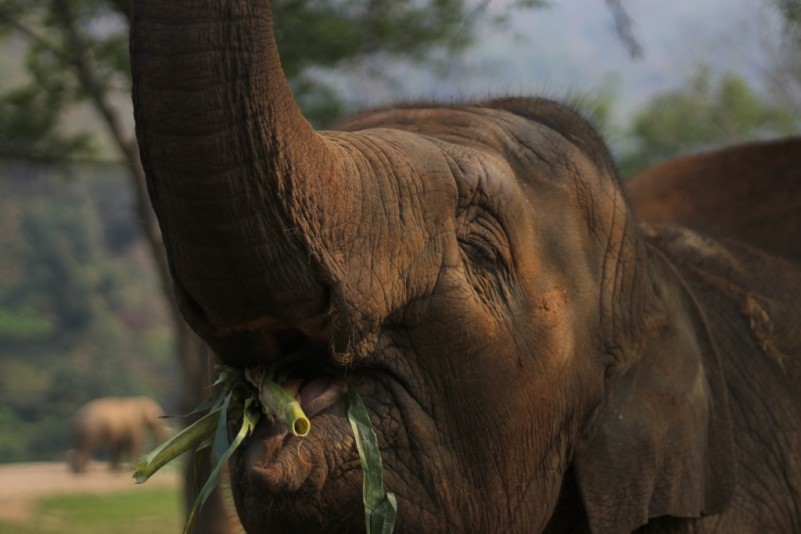
I recommend the following places in SE Asia:
– Wildlife Friends of Thailand
– Boon Lot’s Elephant Sanctuary
Please note: if you have questions about a particular outfit claiming to be a sanctuary and would like me to look into it, send me a message or comment below the post.
If you’re looking for a responsible tour, I suggest the following operators:
– Wild Sumatra
– LocalAlike
– Khiri Travel
– Bangkok Vanguards
– Hivesters
– Le Vélo Asia
– Bornéo à la Carte
– Green Discovery Laos
– Buffalo Tours
What About the Repercussions to the SE Asia Economy?
By sending a message to trekking camps in SE Asia that you prefer a more responsible way to see elephants, things can change. Trekking camps operate because they are money machines. They can churn rides quickly and easily throughout the day. But, if they were to see that they can make more money and give people are more meaningful experience — as well as a more humane one for the animals — there is incentive to change.
Many critics of posts like these argue that by telling people not to ride elephants, the people who run these outfits will lose their money. However, Save Elephant Foundation and other organizations in the region, have proven this to be untrue. There are ways to involve the entire community in sanctuaries or at least more responsible tourism operations, and ways to make more money than simply by offering rides.
Responsible tourism is becoming the wave of the future, and even Thailand tourism is seeing it. More and more places are cropping up which focus on sustainable options for travelers. While responsible tourism tends to cost more money than abusive options, as more places get into the mix, the cost will go down and the opportunity will become more widely available to those on a budget.
How Can I Help Elephants?
As I mentioned previously, education is key to change. By educating others on the plight of elephants, you can help make change. Set an example, too. Don’t participate in rides or shows, don’t buy paintings. Speak out. Sharing posts which depict “happy” elephants playing in the sea (which is actually completely the opposite of a positive experience for the elephant because 1. salt water isn’t good for them; 2. they are likely separated from their family; 3. they are performing for humans; 4. they have been or will be put through the crush) or people riding elephants sends the wrong message. It encourages others to get their photos taken and tick off those check marks on their bucket lists.
Instead, take a moment and educate people as to why images like this should not be shared via social media.

Other ways to speak out against riding elephants include:
– Message guide books who still write about elephant attractions and encourage them to remove the listings;
– Ask your local government to ban rides locally;
– Send letters to consulates of foreign governments who still offer rides and shows and encourage them to change their policies and to give animals more right;
– Participate in public events. Each year in October, the Global March for Elephants take place. Find out if a march is coming to your town.
Please note: links in this post direct readers to additional information. If you wish to engage in a meaningful conversation regarding this topic, please visit the links above before you do so. Comments based on conjecture and written as fact will not be approved. Opinions, however, are certainly welcome.

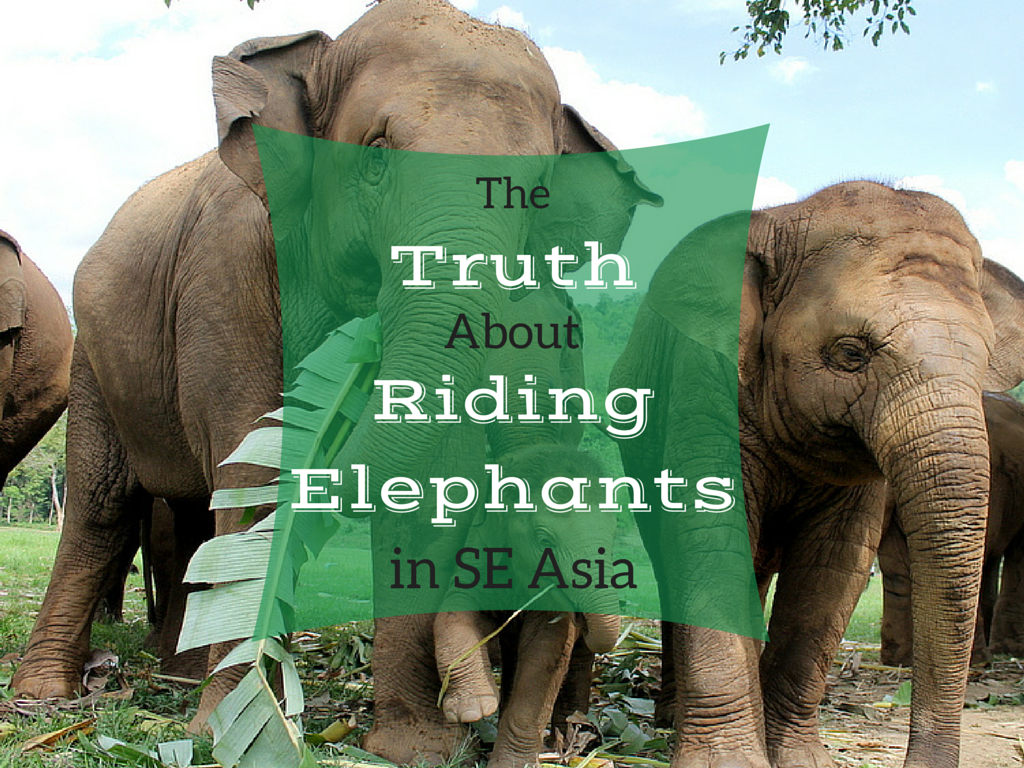
Wow Diane… This is probably the best article i’ve read about the subject. Hopefully, this will make a lot of people rethink the “elephant ride” on their bucket lists. It’s shocking what those gentle giants have to go through, the years and years of constant abuse and torture, for purposes as superfluous as tourists entertainment. I would like to believe that most people who ride elephants (and go to questionable shows, like elephants dancers or playing football…), do it out of pure ignorance of the reality behind it. Thailand is amazing, one of my favorite countries, but the way animals are treated there… not so much. There’s a lot to be done regarding animal rights. And you and other bloggers / vloggers with the same mindset have a huge role in making those changes a reality. Your 2016 WSE Thailand tour is another step in the right direction for the future of tourism! Congratulations!
LikeLike
Thank you so much, Susana! I hope this articles does help change the minds of people considering supporting animal attractions, be it circuses, trekking, etc. I’m so excited for the Thailand tour!! Are you coming?
LikeLike
Thanks for this article. Do you have any reviews or thoughts on the Chai Lai Orchid outside of Chiang Mai? I have always been in love with elephants and this place seems to be doing good work. Do you know anything about them?
http://chailaiorchid.com/dollars-for-deedee-and-friends/
LikeLike
Hi Liia. I am against any place which offers riding of any kind, and Chai Lai Orchard does. I’m not discounting the work they are doing, but I feel this still exploits the animals and encourages abusive practices in tourism because there continues to be a demand for elephant rides. I’m not saying don’t go, but perhaps opt out of the riding and let them know why you choose not to ride them, and educate others about the realities of elephant riding. You also should not be engaging with them on a really up-close level. It’s not safe for you, and it takes away from the elephants freedom.
LikeLike
Diana – Thank you so much for writing this article. I’ve found this and your other posts about Chiang Mai incredibly helpful. Elephant Nature park does not have a full day visit available when I am in town. I was looking for alternatives, and I was wondering do you have any thoughts regarding Elephant Jungle Sanctuary? Thanks!
http://www.elephantjunglesanctuary.com/
LikeLike
Hi, I took a look and they look pretty ethical. While, in a perfect world, there wouldn’t be any human-elephant interaction/engagement, this seems above board and generally ethical.
LikeLike
What about Kuala Gandah Elephant Sanctuary in Malaysia? Abandoned or severely injured wild eles are treated, care for, raised and then trained to become wild elephant rescuers to manage conflicts between wild elephants and farmers. Enroaching wild eles are sedated and then escorted by once wild elephants turned into rescuers towards waiting trucks before these wild eles are released in 3 huge national parks in Malaysia….almost 700 wild eles have been safely relocated and released to their new homes with the loss of one ranger.
Even an ele that was mauled by a tiger was saved by the men @ this sanctuary….and they even have a 78 years old female ele with the youngest around 18 months old found trapped in a hole…
Go to tripadvisor and search Kuala Gandah Elephant Sanctuary…
LikeLike
I am not familiar with this sanctuary. I do not believe in using animals and am concerned about how they are trained. That being said, I did a little research and it seems to skew towards more responsible with no rides being offered and a lot of education. Without knowing if weapons are used to make sure elephants listen and how much interaction tourists actually get (ideally, there should be none), it would be a better option than camps offering riding or using hooks.
LikeLike
Thank you for this great post! I only wish I had known this information prior to my visit to this park in Bali back in 2012, but sadly at that point in my life I hadn’t done the research and didn’t think twice about it. http://www.baliadventuretours.com/index.php/en/elephant-safari-park/safari-park/about-safari-park.html
They told me how they were rescued from the logging industry, and I didn’t know any better. Now that I re-visit their site I see they offer paintings, have rides on the wooden box, etc. and I wish I hadn’t gone 😦
LikeLike
You know now, and that is what is important. Use that knowledge and educate others 🙂
LikeLike
Hi,
Thank you for an informative post.
I was wondering if you had heard of Elephant Hills in Khao Sok National Park. It is claimkmg to be a sanctuary and offers no Elephant riding, however I have seen pictures of the mahout sitting on the elephants. If you have heard anything about Elephant Hills I would very much appreciate your opinion.
Many thanks,
Danielle
LikeLike
Hi Danielle – here’s the thing. Some camps do it right, some do it OK, and some don’t do it right at all. While I personally prefer zero interaction with the animals, that isn’t always the case. I look for the following: no rides, no shows, no hooks or instruments to make the animals listen, no chains (or off-chain except to sleep or for medical/vet purposes), and no interaction with humans. If it is only the mahout sitting on the elephant, while it isn’t ideal, it also isn’t random people doing so. I’d give it a good look on sites like Trip Advisor (start from the worst reviews) to see if there are things going on which their own website isn’t sharing.
LikeLike
I’ve recently booked into Elephant Hills for January and am hoping that it is indeed as high welfare as the website suggests. I read on their website that they have been awarded a Thailand Green Excellence Award for Animal Welfare last year by The Tourism Authority of Thailand and Wanderlust Magazine. I have a very strong trust in Wanderlust Magazine in terms of its ethics and commitment to such, so this reassures me that Elephant Hills is one of the good places to visit. I wondered if you’d had any more recent information or experience on them since this comment last year? Thank you in advance!
LikeLike
Hi, I don’t, sorry!
LikeLike
Hi Diana,
Thank you for this post. I couldn’t take watching the videos, but you described them well enough. I’m going to Chiang Mai later this month and I’d really like to visit one of these elephant-friendly places.
I want to check with you.. Is Elephant Jungle Sanctuary a legitimate sanctuary for elephants? I checked the activities for a day’s visit and it’s pretty similar to that of Elephant Nature Park. But cheaper, I think. I’m just basing it off on memory, so I’m not sure.
Would you recommend it? It’s not in your list. I hope I can get a reply by next week. Will be in Chiang Mai 3rd week of May. Thank you!
Sheila
LikeLike
Sheila – I’m so sorry for the delay. I was working on my business launch. You need to look for the things I mentioned in my post on their website. Give it a good comb through. Do they have rides? Shows? Chains? Hooks? If yes, then skip it. The cheaper the experience, the less likely it is a sanctuary.
LikeLike
Hi Diana,
I am only a portion through reading your info above and it’s very interesting and makes me even more desperate to help. I will send you a separate email to see how I can help out.
I agree that education is an effective way to get through to people about the tourism trade, and that the ‘breaking of the spirit’ is so barbaric. I posted a video on Facebook tonight of an elephant park in Krabi that I visited after hours. All the elephants were chained and separated where they weren’t allowed to socialise with one another. One question posed by someone who viewed the Facebook post was – why do they separate them considering they are herd animals? In the interest of more education for people, do you know why they do this? Is it to let them know who’s boss and to keep their spirits low?
Thanks,
Bec
LikeLike
They shouldn’t separate them. Sometimes, for their safety, they have to be chained if the shelters aren’t good, but other even if chained, they should be chained with their friends, not alone. They ARE herd animals and social animals and not being together is emotionally distressing for them.
LikeLike
Hi Diana,
Thank you so much for all this information. It’s so so helpful! We are currently in Nepal and want to go to Chitwan. There is a lodge that is trying to encourage responsible tourism there that do elephant walking (not riding) and the elephants are unchained etc. What are your thoughts with walking with them, bathing with them etc. Thanks in advance!
LikeLike
Hi! To be honest, the ideal situation for the elephant is one which does not include any interaction. That being said, there is no magic bullet to make this so, especially given that there is a demand for animal interactions. This is definitely a far more responsible option, although I still believe observation is the only truly responsible option. However, it takes time to get to this point, and an organization to lead by example quite publicly. Personally, I find the best way to be around elephants is in the background and simply watching how amazing they are!
LikeLike
Hello. Do you know if Elephant Dream valley is an ethical sanctuary?
LikeLike
Take a look and see what it offers. Rides, hooks, tricks, shows, chains, touching … then it isn’t.
LikeLike